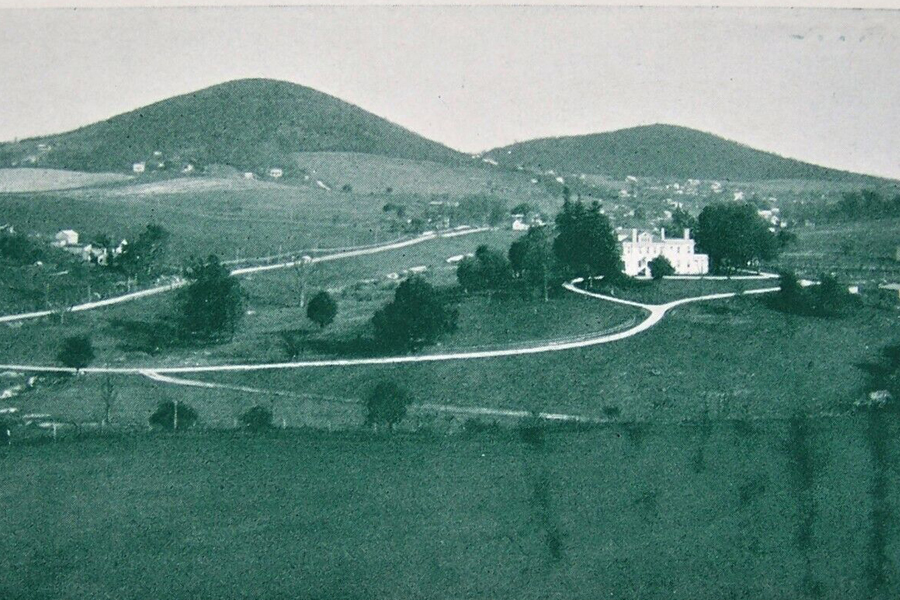by Allison Peacock
Share
Share

How Scottish folklore is lending insight into a Camden fallen’s identity
Working with 244 year-old DNA profiles is never boring! The stories we uncover add color to our understanding of our unknown 18th century subjects.
One of our Camden fallen, a hero we call Continental 11A, has a large cluster of matches originating in 18th century Staunton, Virginia. Working to understand this cluster soon took us back to Ireland.
We hoped a local legend might give us clues for tracing these Virginia settlers back to Irish ancestors whose connections might help give us our John Doe’s name. From his position on the battlefield and common understanding of the regiments that fought that day, we approached his investigation thinking he was most likely from Maryland.
Staunton, Virginia’s original Scots Irish settlers had a great impact on that area. Nowhere is this more evident than in the naming of two small mountains that lie right smack in the middle of town!
Their names? Betsy Bell and Mary Gray.
The legendary names of Bessy Bell and Mary Gray trace back to 17th century Scotland. Local folklore tells the tale of two girls who took to the hills to escape a plague. They are said to have survived by the good graces of a young man who visited them often, bringing food and falling in love with both girls. Legend says they were eventually infected by his gift of a pearl necklace unknowingly stolen from a plague victim.

Scotland’s 17th century Bessy Bell and Mary Gray became Virginia’s 18th century Betsy Bell and Mary Gray. Thomas Macklin engraving, 1787.
With the migration of many Scottish families into Ireland during the Ulster Plantation era, two hills near Omagh in County Tyrone were named after Bessy and Mary. Many of the 18th century Scots Irish settlers of Staunton, Virginia came from this very area, including our soldier’s relative, John Nichol/Nickell of Gortin, a village adjacent to Omagh.
That the Staunton settlers named local hills after the landscape back home ties the two areas together, as does the DNA of our unknown soldier. We even find some of these same Scots Irish families in his tree, but living in South Carolina, just a few miles from Camden itself.
Historians generally believe that Scotch-Irish settlers to Staunton saw a resemblance between the Irish mountains and the ones back home. Some local sources credit the naming directly to pioneer John Lewis, one of the earliest settlers, who landed in Augusta County around 1732.
Why is this folk tale so important to our investigation into a Maryland patriot who died in South Carolina?
Staunton settler John Nichol is the foundation for a large cluster of genetic matches that are mysterious and unconnected to the rest of his family tree at the moment. We believed that understanding why these Virginia ancestors match a man reputed to be from Maryland was critical to our hope of identifying him. After six months, our hypothesis has changed! (More about the potential Virginia artillery connections to the Battle of Camden is in our blog post here.)
In true American fashion, names have evolved over time. Bessy Bell’s American counterpart became ‘Betsy’ and Nichol became ‘Nickell’ for the next 200 years – yet the records are clear. Camden Patriot 11A has genetic ties to the towns of Omagh and Gortin in County Tyrone through Staunton, Virginia settler John Nickell.
The legend of Betsy and Mary has also changed over the generations. Virginians a century later told the tale of two young girls killed by Native Americans while hunting chestnuts. A 19th century African American folk stories identified the girls as witches who were hanged in the mountains.
Like DNA, following the records tells us the truth of the Scottish lasses memorialized by their Scots Irish fans so far from home almost three centuries ago. If not for this tale, we might not know where to look for our next clues to 11A and his origins.
Betsy and Mary inspired the forensic team to invite the Irish descendants of the Nichol/Nickell, Lewis, McCombe, King, Fowler, Poage, Rayborn, and Craig families of County Tyrone to join our project. Our research in Irish records continues!
Additional Information
Colonist John Lewis, wikipedia.org.
Bessie Bell & Mary Gray; Complete folk tale with lyrics and sheet music. Made in Perth.
Betsy Bell and Mary Gray: Mountains and plague victims, March 19, 2017; Updated April 20, 2020; NewsLeader.com

